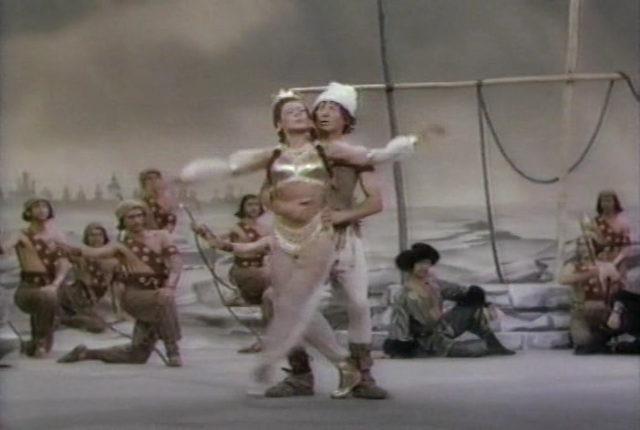By Rachel Straus
Have you ever wondered what it would take to partner a female ballet dancer? The May 6 matinee at New York City Ballet was an excellent primer for anyone considering this question. In each of the four works from the All (Jerome) Robbins program, at the former New York State Theater, the male lead rarely left the side of his ballerina.
Robbins’s In G Major was a case in point. In the pas de deux section to Ravel’s eponymous composition, Tyler Angle lifted Maria Kowroski at least 25 times. In the end, Angle walked off the stage with Kowroski in a six-o-clock split, her head almost touching his. To create this pose, Angle benched pressed the tall ballerina above his head. Because of the pleasing geometry of Kowroski’s long line, and the ease of her form, my eye naturally moved to her. But it was Angle underneath who made this vision airborne—and magical. At the last moment, Angle’s arms looked like they were going to fail him. Fortunately, the stage wings were steps away.
Besides Robbins’s The Cage (1951), about a tribe of man-eating insect women who destroy one of their prey (Craig Hall), Robbins’s other ballets on the program showed the influence of Balanchine’s neoclassicism. In the Night (1970), In G Major (1975) and Andantino (1981) are plotless ballets. They feature a relationship, or relationships, between a man and woman, which is expressed through a pas de deux. Balanchine expanded classicism through the partnered duet. His lifts were far more complex than his predecessors Petipa, Fokine, and Massine. They didn’t just go up and down. They traveled. The woman changed poses in mid air. The lifts often began and ended in full-bodied motion. In Robbins’s three ballets, Balanchine-style partnering is evidence. The women sail through the sky like birds (and occasionally like fighter jets). The men below them propel their wings.
Of the male leads from In the Night, to music by Frédéric Chopin as performed by Nancy McDill, Robert Fairchild and Sebastian Marcovici stood out for their convincing portrayals of men in adoration of their women. While Fairchild played the young lover to Sterling Hyltin, Marcovici danced the steadfast companion to Wendy Whelan’s vexed, ambivalent character. Marcovici’s lifts expressed the unswerving nature of his love. While she thrashed and pulled away from, Marcovici carried Whelan aloft through her psychological storm. Their pas de deux was the highlight of the afternoon.
Back in 2007 a documentary about the recently retired New York City Ballet principal dancer Jock Soto was aired. Called Water Flowing Together, it contains a memorable scene in which the virile Soto is crumpled in a corner of a studio. With tears of exhaustion, Soto talks about how his arms ache. He says he doesn’t have the strength to lift another ballerina. Yet Soto wasn’t angry or resentful. He expressed exasperation with his ability to continue to make partnering look effortless, to make lifts symbols of the transcendent power of love.
The men of City Ballet, and male ballet dancers everywhere, may not have to dance on the tips of their toes or to suffer the same degree of competition as female dancers, but their job is no less easy. They literally carry certain ballets. Balanchine said “ballet is woman,” but ballet without men would strip the art form of humanity, and of its fundamental expression of being there for another.


